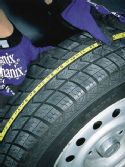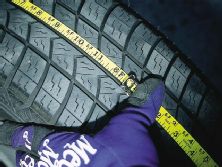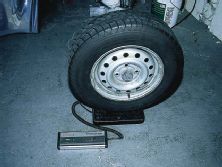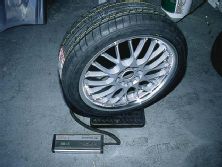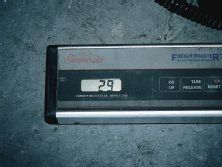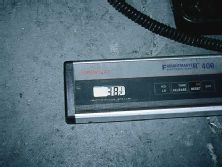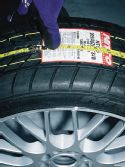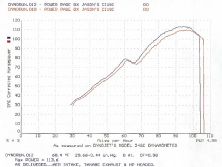Being incurable skeptics, we spend a good deal of our precious deadline time in the dyno cell.
Your hard-earned money means a great deal to us, so we go the extra mile to conduct empirical testing on as many of the parts that we install as possible. The bottom line of performance products is their performance. And the dyno is the standard by which all should be measured.
We have seen some anomalies along the way and know how to catch cheaters. One of the most interesting hiccups appears when we re-baseline a car prior to bolting-on a battery of new mods and find a discernable variance in power output. Nothing on the engine has changed, yet there is a drop (usually) in power. We can also attribute this difference to the addition of performance wheels and tires; we decided to put our theory to the test.
Our test vehicle was a Civic DX outfitted with an AEM intake, Tanabe exhaust and HP header. The Civic was strapped to a Dynojet, and with the stock wheel-and-tire combo, belted out 113.6 hp.
The tires were removed and measured for circumference and set on the scales to record weight. The stock steel wheels and 185/R70-13 were 6 feet, 3/8 inches in circumference and checked in at 29 lbs. Then, Nitto 205/ZR40-17 tires were mounted to 17-inch aluminum alloy wheels. This combo measured 6 feet, 2 1/8 inches and tipped the scales at 38.5 lbs. The upgraded combo was 9.5 lbs heavier and 1.75 inches more in circumference. Back to the dyno. The DX was brought to peak power and suffered losses throughout its entire rev range. At peak, 3.8 ponies were lost, but drops as high as 6 hp were realized at 70 mph. Ouch.
Some may wonder if it was the weight or the size difference that caused the power loss. It was both. Being bigger, more effort is required to turn the wheel. The effective gear ratio of the car was altered, meaning slower pick up and much more difficulty in getting the car to chirp the gears. Being heavier also means more effort is needed to turn the wheel. The extra weight makes the car struggle more at the moment of inertia and use more power to keep the drive wheels turning.
On the DX, the 3.8 hp loss at peak represents a drop of 3 percent in output. This proves those trick wheels do cost more than money. Now you have to weigh (pardon the pun) the consequences: How much power is that fat chrome worth? Where does it cost too much? And finally, should you consider wheel weight when it comes to your decision making?
Tire Size vs. Power Production
Stock Upgrade
Tire Size 185R70-13 205ZR40-17
Circumference 6 ft. 3/8 in. 6 ft. 2-1/8 in.
Weight 29 lbs. 38.5 lbs.
Horsepower 113.6 hp 109.8 hp (-3.8)

